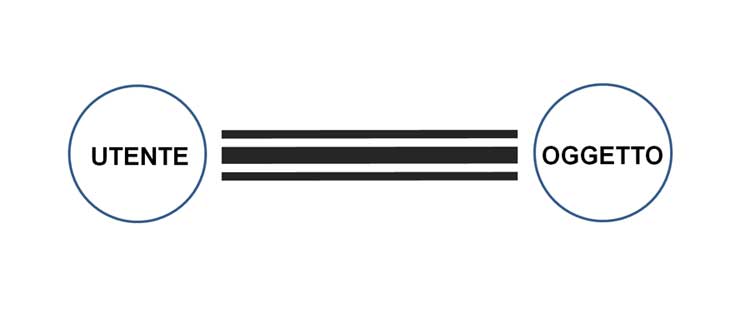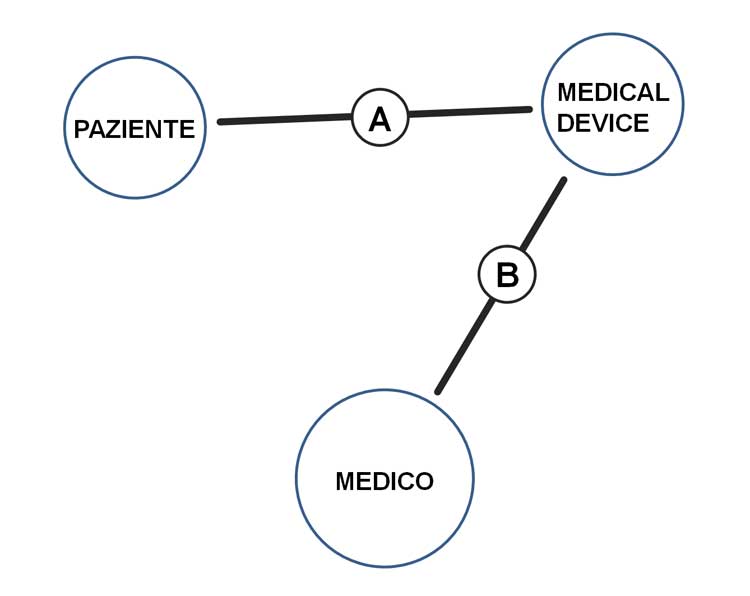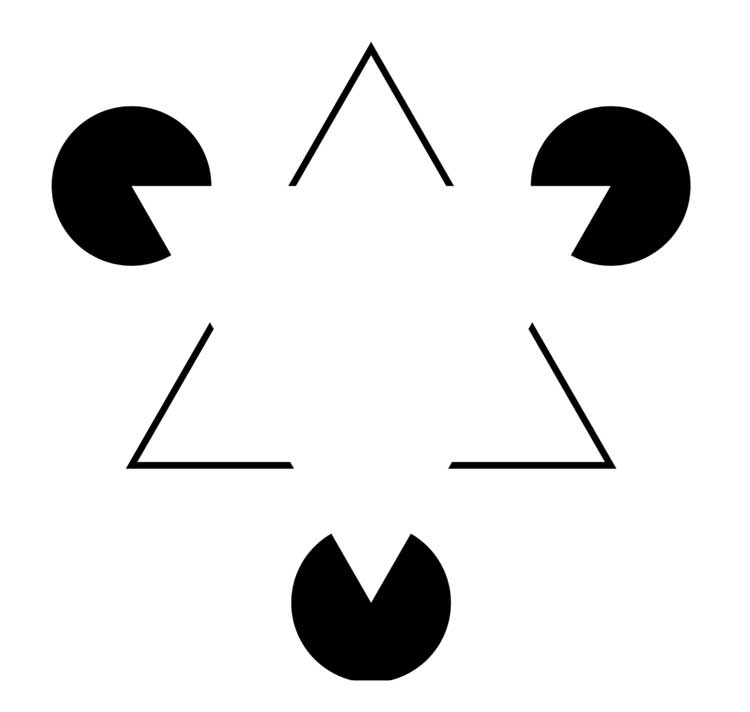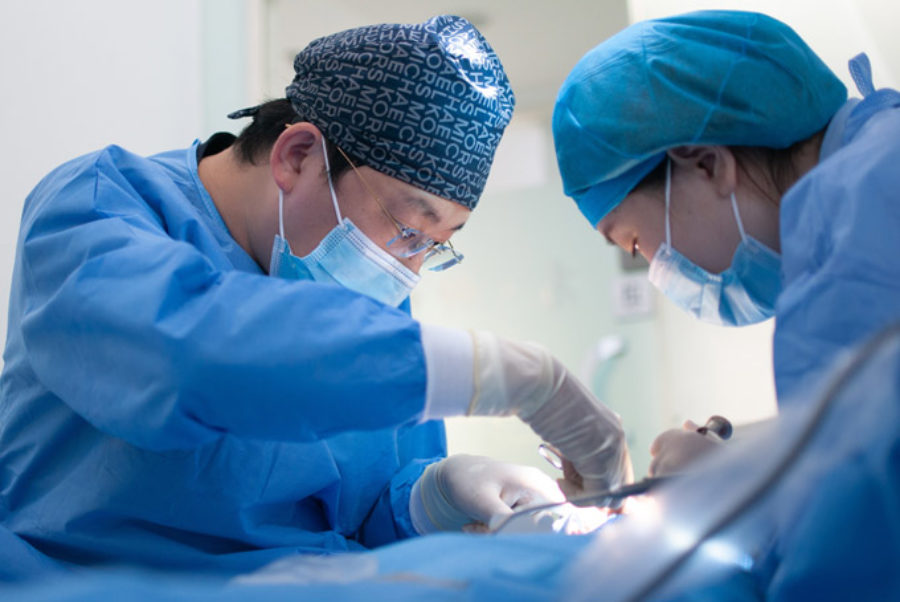Industrial Design in the medical field
The object – user interactions

Generally the interactions that an object generates are established between two poles:
the user and the object itself.
Usually those who cook use an appliance to prepare food.
A smartphone establishes a very close interaction with its user
to the point of becoming an appendage to it and generating a virtual environment where social relationships develop.
Interactions in medical devices

In the medical field there is a triangular interaction.
On one hand, between the instrument and the doctor or healthcare worker.
On the other hand between the instrument and the patient.
These are very different interactions. Let’s take a look in more detail.
Patient instrument interaction

- Quality perception
- Aesthetic qualities
- Reliability
- Safety
The Patient, for obvious reasons, does not use the medical equipment directly. He enjoys the benefits it can bring and establishes a relationship with the apparatus on a perceptual and communication level.
With industrial design in the medical field, we have to think on a psychological level.
The patient needs to be reassured, to feel that the doctor is using reliable equipment. But usually the patient does not ask these questions directly as it is not appropriate.
But he perceives it, most of the time unconsciously, from the shape and look of the instrument.
So the Industrial Designer plays a very important role as he is responsible for the perception of the instrument. Generally an instrument that has staggered planes, exposed cables and connectors, disordered structural elements, communicates a sense of discomfort as the patient perceives this visual disorder with a sense of restlessness as if the doctor was using equipment that is not entirely reliable and unsafe.
Instead, an instrument that offers continuous surfaces, formal cleanliness and that does not show cables or probes in disorder gives the patient a feeling of reliability.
Gestalt Psychology applied to industrial design in the medical field
The aesthetic qualities of the product are
continuity of surfaces,
praying forms,
correct proportions,
colors that communicate serenity.
They are elements immediately perceived by the human psyche.
Gestalt psychology teaches us that our psyche tends to constitute formal unity. Satisfying these psycho-perceptive needs of the mind should be one of the most important attentions of the Designer.
In this regard, one would ask: how many designers trained in current university courses have this awareness of values?

This famous image was created by Gaetano Kanizsa, one of the leading scholars of Gestalt Psychology, (I had the honor of having him as Professor of Psychology of Perception). He founded the Institute of Psychology of the University of Trieste. He graduated in Padua with Cesare Musatti, and has become one of the protagonists of Italian experimental psychology.
What do we see in this image?
In reality the white triangle does not exist, but it is created by our mind.
This Gestalt law is called psychological closure, and it is the demonstration of the tendency of our psyche to close forms and to constitute unity. Note that the white of the psychologically closed triangle appears whiter than the white of the background.
Medical tool interaction

- Usability
- Ergonomics
- Accessibility
- Maintenance
- Sterilization
- Quality perception
For the doctor or healthcare professional in the medial field, the equipment is a work tool that must offer ease of use and ergonomics that allow him to carry out his work in a simple, fast, intuitive way, without forcing bad posture. The tool must offer intuitive interfaces that are easy to perceive and use and the functional features that render work simple and safe.
The parts to be used must be easily accessible in an intuitive way. The design must also take care of the needs of the technical personnel who will have to carry out maintenance on the machine. Furthermore, the shapes must be studied so that there are no receptacles of dirt and to allow easy cleaning and sterilization.
The topic of the perception of quality remains of great importance also in the interactions between doctor and machine and in this case it also has important commercial and marketing implications.
User Centered Design
In the design of medical equipment, the involvement of doctors at a very early stage of the design is very important for the drafting of a valuable brief. It is essential that the Designer has the opportunity to study the doctor’s activity with the machine through:
- Interviews
- Visits to the operating room to observe the procedures and understand their use.
- It is very important for the Designer to observe these activities firsthand and not from the stories of third parties. The Industrial Designer has a mind trained to perceive what needs to be improved for a superior user experience.
- Filming the use of the machine and tools so that you can study them calmly in the office.
- Test the prototypes of the instruments that must be held directly in the field, creating rapid prototypes or models.
This is the only way to truly understand if the solutions adopted are correct and to improve the user experience.
Interactions with the environment

Moving away a little for a broader view of the medical field, we immediately realize that there are other interactions of medical equipment with the architectural environment where they are used, typically the hospital or doctor’s office.
The shape and color of the product contribute to the definition of a neat, clean and reassuring environment. The architectural quality of the healthcare environment is also perceived thanks to the quality of the equipment design.
Furthermore, even at exhibitions, product design helps to give an image of reliability to the company. The Design highlights the technological qualities of the product, often hidden at first glance.










